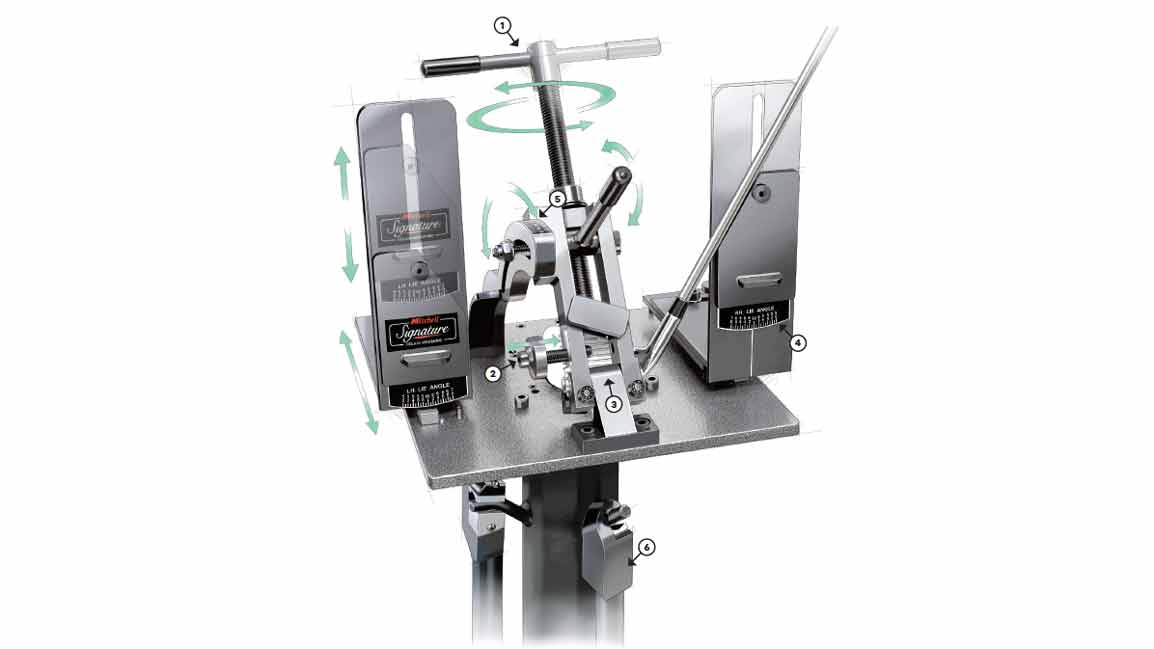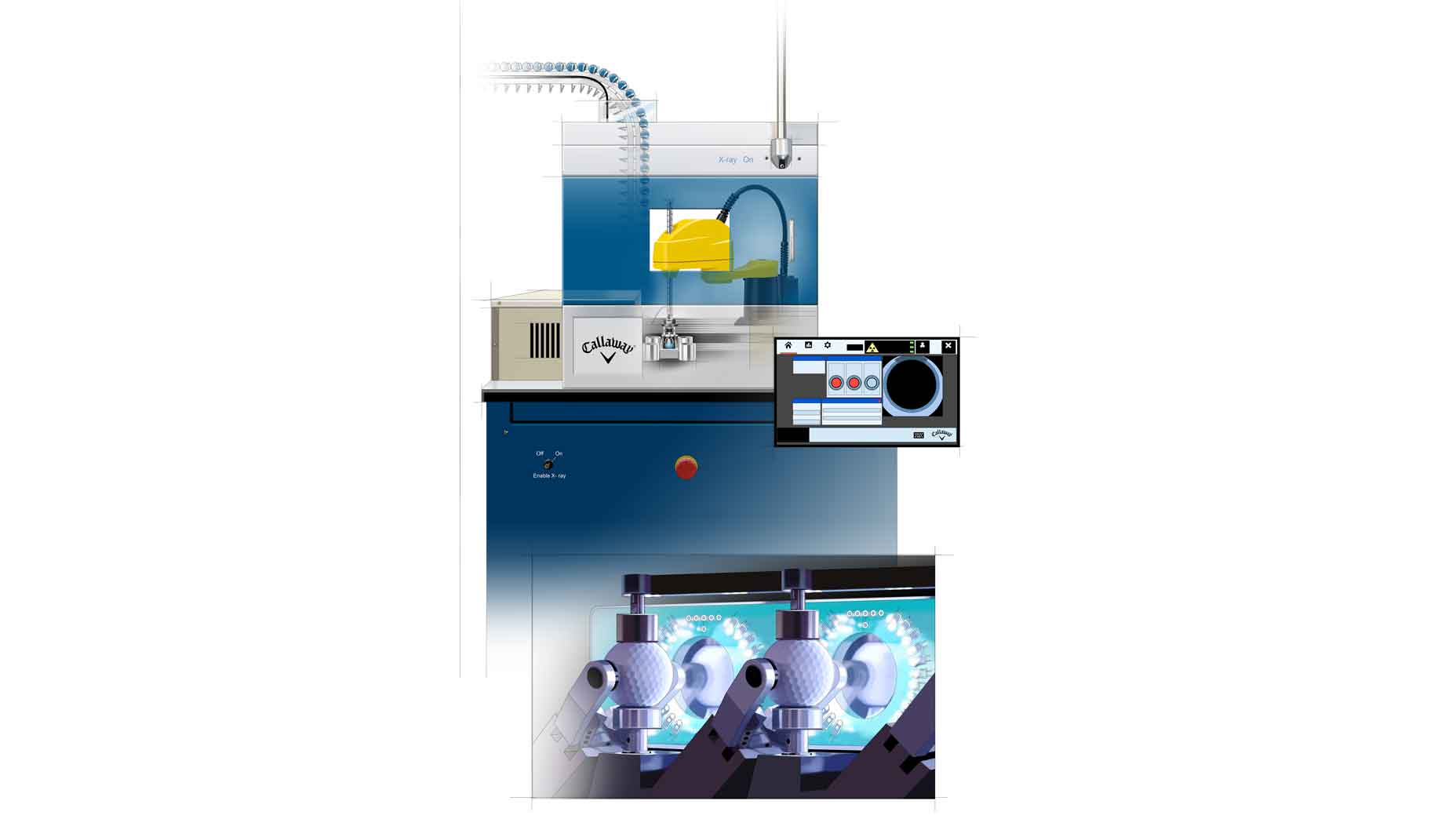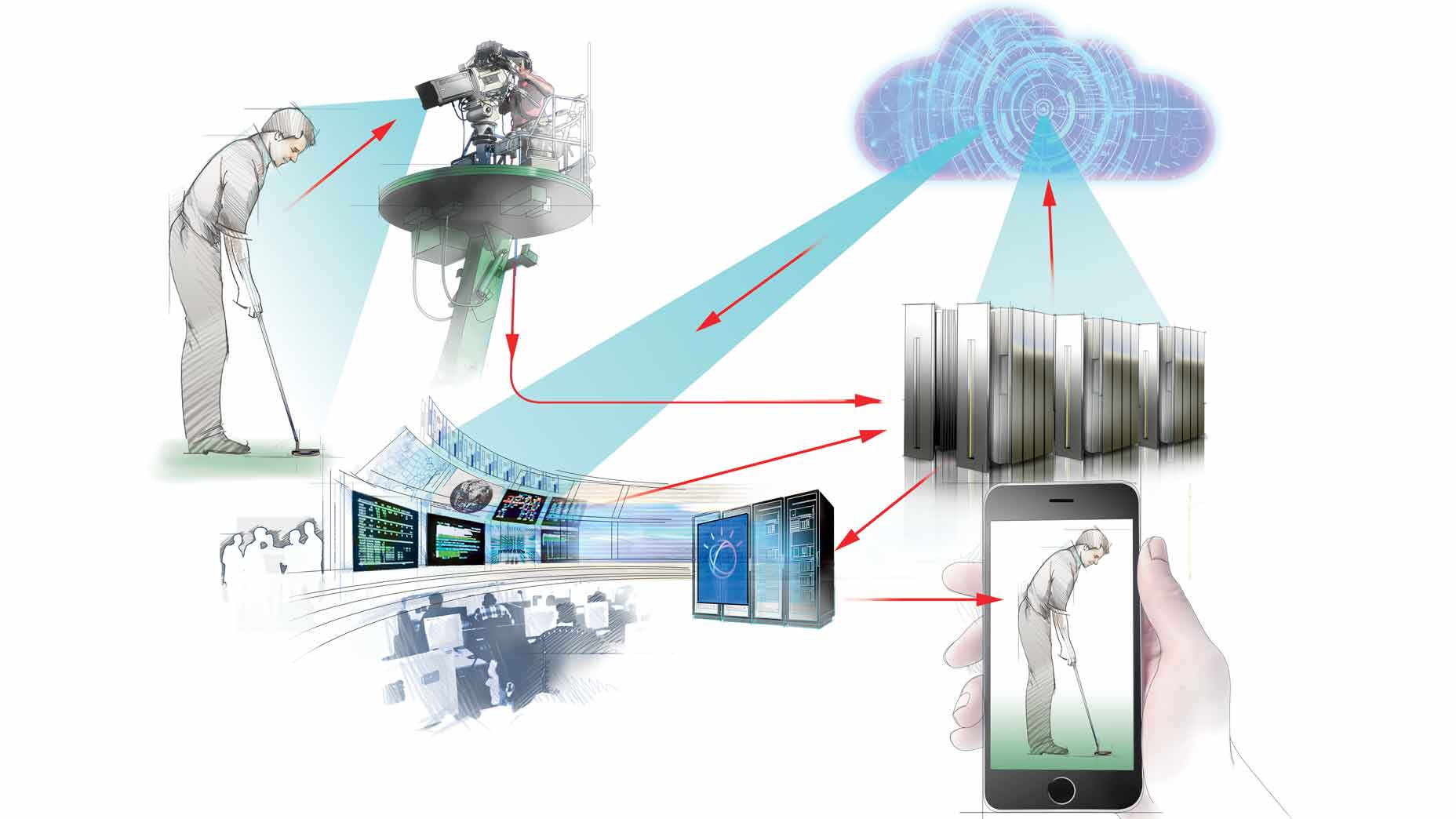As you certainly know by now, clubfitting isn’t just for touring pros and single-digit players. This not-so-dark art is aimed specifically at helping higher handicappers improve. For all its amazing tech, clubfitting aims to help you do something theoretically simple: hit the ball the same way, over and over again.
A crucial tool in a clubfitter’s arsenal? The angle machine, often referred to as a loft/lie machine. After analyzing your swing, the clubfitter uses this instrument to adjust your clubs to the natural tendencies of your game. Those diagnosed as toe hitters and heel hitters will see adjustments to their club’s lie angle, while loft tweaks are aimed at sharpening distance gaps between clubs.
The most important aspect of any loft/lie machine is its ability to lock every club into the same, uniform position. Consistency provides clubfitters with accurate readings and maintains the integrity of the club as it’s being bent.
How It Works: With this Flightscope simulator, you can tee it up at the world’s best coursesBy: James Colgan
“One of the really useful things, specifically in addition to all the other technology, is that it makes the ruler that we’re measuring against more uniform and less subjective,” says Tim Briand, executive vice president of GOLF’s sister company True Spec Golf. “It helps us link different performance attributes and outcomes to specific changes in the golf club.”
At first glance, the industry-standard Mitchell Golf Steelclub Signature unit looks more likely to give you a cranial lobotomy than a solution to your slice, but fear not. Beneath the pulleys and levers is a tool aimed at making you a better, more consistent and overall happier golfer.

1. T-Handle
The T-handle is a rotating crank that works in conjunction with the toe stop (2) and sole rest (3) to lock the club into the proper position. The T-handle is responsible for controlling the top clamp while the other two help secure the toe and sole of the club.
2. Toe Stop
The toe stop screws in on the toe side of the club and locks it into the proper position. The toe stop can be positioned on either side of the machine in accordance with a left- or right-handed club.
3. Sole Rest
Opposite the T-handle, the sole rest adjusts to the shape of the sole.
4. Lie Angle Gauge
Once a club has been affixed to the machine, the shaft rests against the vertical plate, which provides the fitter with a measurement of the club’s lie angle. From here, the fitter can adjust the club in either direction until the desired angle is reached.
5. Loft Angle Scale
This rounded, upward facing measurement allows the fitter to adjust the loft of a club. A proper loft ensures the player can hit each club the desired distance.
6. Bending Bars
The fitter uses this pulley to adjust the loft of the club.







